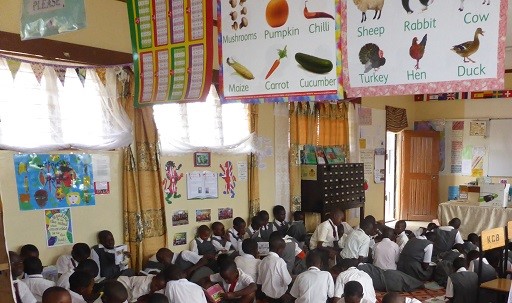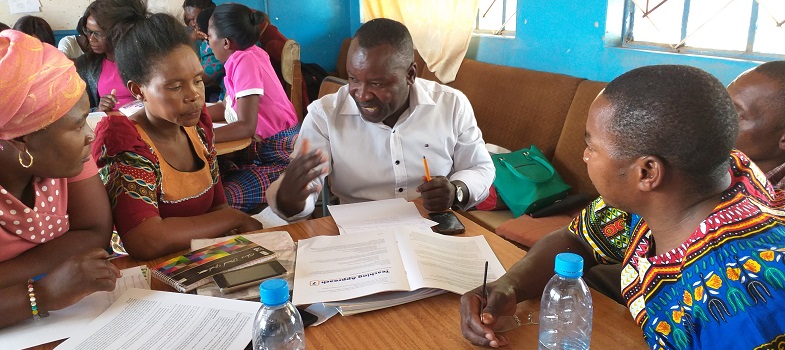Training guide
4. Supporting reading and writing across different subjects
As you read in the introduction to these training materials, supporting literacy doesn’t only take place in literacy or English lessons – all teachers can do it, whatever subject they are teaching. One thing that helps learners with literacy skills across the curriculum is having a classroom that is a print-rich environment.
What is a print-rich environment?
A learning environment can be the full school or a classroom. Imagine two learning environments. The first has nothing on the walls and no books. The second has walls with posters and pictures with words, and a ‘reading corner’ with books. This second example is a print-rich environment. Here is a photo of one such classroom.

A print-rich classroom provides learners easy access to reading resources.
In a classroom which is a print-rich environment, pictures, posters, learners’ written work and other written resources help children to develop their skills by giving them things to read around them. It also makes them feel motivated to learn. So, what is in a print-rich classroom? It will have lots of different types of language in written form. As well as books, these things can include posters, food-packaging, pictures from old magazines or newspapers, maps, graphs, timetables and things that you or learners have written on pieces of card.
Try to change the displays regularly. New curriculum topics can be good opportunities to do this or you could create different corners for each subject area. Having a display with, for example, mathematical language can really help your learners.
Activity 5.5: Creating a print-rich environmentIn one school in Zambia, teachers hung activity envelopes on trees in the play area for children to explore during their breaks. These were extremely popular with the learners and are a great example of a print-rich school. Look around your school and think about the questions below. Write your responses in your Teacher Notebook and share them with your colleagues in the next TGM.
|
